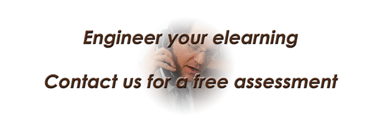Diffusion of Technology Theory establishes the adoption of technology in society, it basically outlines how a few users, called early adopters, will start using a new technology, then a wave of early users will follow. By this time, many of them would be using the technology in ways the inventors or developers never imagined. This is true at all levels in education, teachers and educators start experimenting with these technologies in the classroom, then they will report on their results to other educators who will try to figure out how to use it. You can hardly call this research; there is no control experiments, data collection, or testing, just anecdotal reports.
It will take time for the eLearning research community to conduct studies that will provide reliable data, by this time the technology would probably be out of fashion or off the market. The best-case scenario is the technology reached maturity, it is well established in society, and late users have spent some time using these technologies. For example, Facebook is used extensively in both eLearning and classroom settings and its use is ubiquitous in society. Many teachers and educators are still experimenting with ways to use the technology, even though young students may not be using this platform exclusively and they may have moved on to using other platforms.
In the end, a few of these advancements will survive the market, many will not. Take for example the video-sharing platform Vine. It was the preferred choice for posting thirty-second videos but then competitors caught up, plus they could not find a way to make the platform profitable, it sadly closed its platform some years ago, although you can find many Vine videos posted on YouTube. It never caught up in education mainly because of its security settings, which would not allow the control of access to non-educational content (this you can do on Facebook or Twitter).
There are other technologies that do not fade with time, they may be out of mainstream but they return thanks to advancements in the field. A great example of this is Virtual Reality or VR, extensively used in education at all levels. The return of the VR visor, now called the Oculus, has brought this technology to the forefront. This trend started when smartphones gained attention during the first decade of this century, especially when the IPhone came to the market.
A recent trend is the use of wearable devices, which are attachments to smartphones only with less memory and a hardware that can fit in your wrist. They have touch-screen technologies but they rely on your smartphone for data updates. Many competitors have come to the market to compete with Apple™, for example the Fitbit™. These obviously seem great technologies to have for our daily use, and many are wondering if other uses could be found, for instance for education in eLearning settings.
How can we apply wearables in eLearning? The great thing about these devices is the closeness they have with the user, unlike phones that you could leave somewhere. This means you can receive live updates, notifications, email, messages, and so on. It can also help in localization, which could be applied to games involving GPS technology (there is an international club where people hide things for other to find using GPS). It can help during synchronous interactions with classmates and instructors, since the user could read messages and emails immediately.
Students could prepare for a study trip to the library by loading their bibliography selections on their devices, they would walk around the library and an alert sent to the wearable device will let them know their resource is available on that shelf. They could check out the book right there, if they decide they need this resource.
A lot of these devices have been marketed as health monitors, PE teachers could use the data collected from these devices to assess the exercise needs of students, and if they are doing the assigned routines. Coaches could study player movements using the data collected from these devices; this will help them create visual reports of plays for later analysis.
So far, many improvements have been made to these devices but do not expect it to replace your smartphone any time soon. Wearable devices cannot operate on their own yet, they need the power of the smartphone to access data and connection to the web. One reason this is yet the case is the lack of platform for development, there is still no preferred OS (operating system) for these devices (think XCode and Android), developers are reluctant to invest time and resources on apps that later will not integrate with other platforms (remember MP3 players?). In addition, wearables in eLearning have yet to prove their effectiveness. At least we now know smartphones are not appropriate modes of delivery for eLearning and online education. They can be complementary to other tools, and that might be the case with wearables. In the meantime, many innovative teachers and educators are experimenting with these devices. So far, not a lot of research is available yet, I just hope wearables don’t fall victim of their own success and suffer the fate of the Google Glass.
As always, find us in social media. You can share this content by using the buttons below. If you have questions and comments, use the form at the bottom of this page, or contact me directly, and I will get back to you as soon as I can. Thank you for reading this post.

